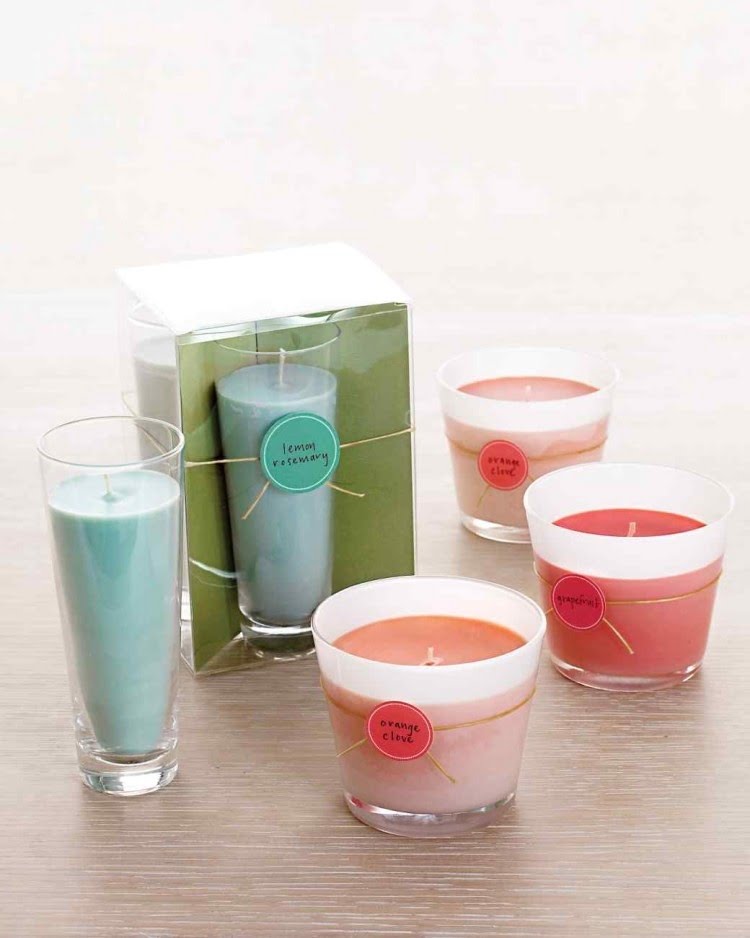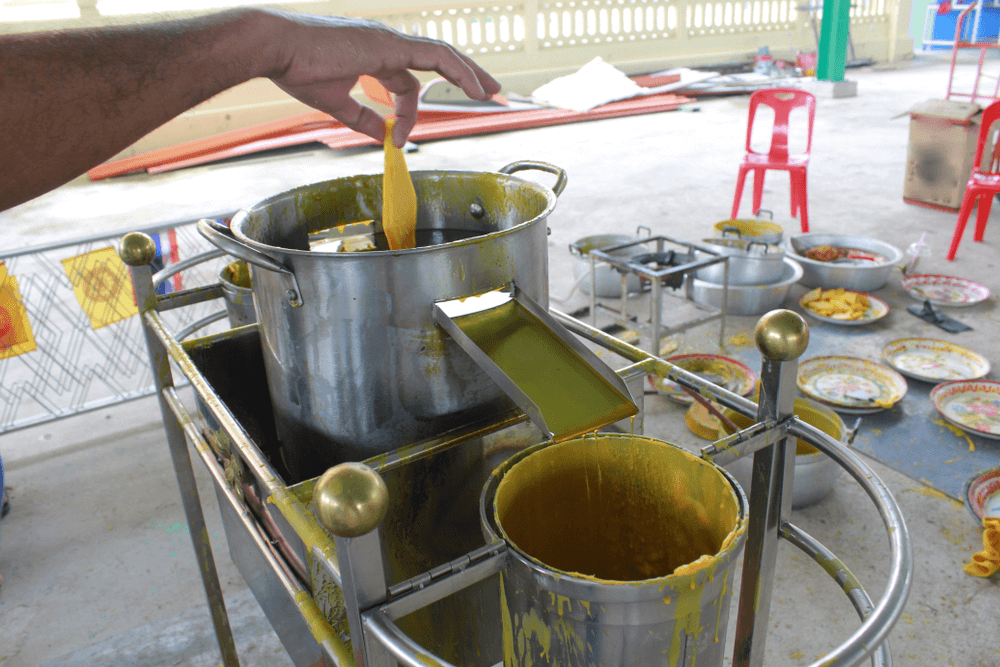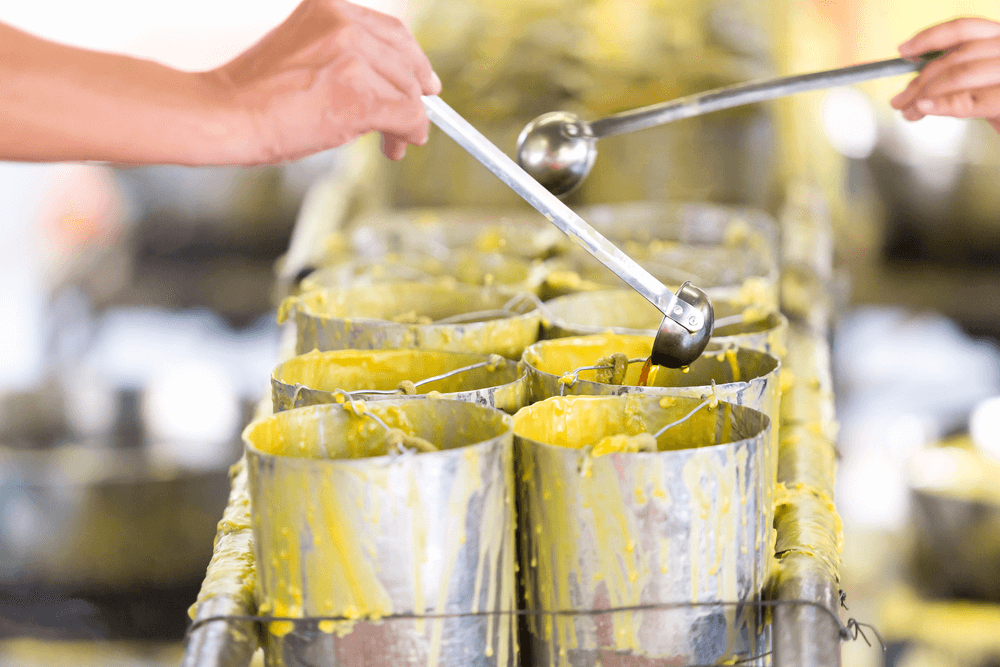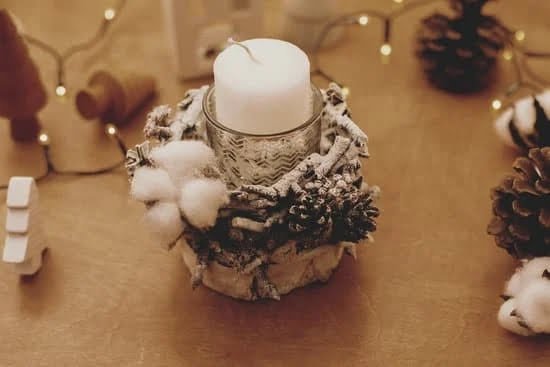Introduction
Candle making has a long and storied history. Long before electric lights and gas lamps, candles provided an inexpensive and reliable source of light for homes during the dark winter months. Ancient civilizations from China to Rome used wax from various sources such as beeswax and tallow to craft their own unique styles of candles. As we explore the history of candle making, it’s interesting to note how candles were made in the past and how this compares to modern candle making.
In ancient times, natural materials such as beeswax were used to make candles that were quite simple in design and utilised only a wick for fuel. The wick was most likely cotton or hemp but could also be made from other absorbent materials such as rushes or wool soaked in melted wax or oil which created a much larger flame than what is seen today. Over time, different forms of containers such as clay pots with small holes in the bottom began to be used in order to provide more structure and support for the burning wax and wick. This method was especially popularly used during religious ceremonies when ceremonial offerings had to be made.
The use of palm wax, bayberry wax and whale oil wax eventually became more commonplace, making it possible to create more intricate shapes with more elaborate designs than ever before. In Spain tallow was also widely available through animal husbandry which allowed artisans there to experiment with creating decorated candlesticks with ornamental holders, adding yet another layer of beauty from these early works of art. By the 18th century advances in technology gave way to mass production where molds became available which allowed candle makers an easier way to craft their products into a variety of shapes ranging from geometric figures all the way up to intricate designs that could contain several layers of color or tapestries woven together on top of each other forming literally works of art! This revolutionized how candles were produced forevermore allowing people around the world access to diverse selections that were otherwise unattainable through traditional methods at an affordable price tag!
Traditional Candle Making
Candle making has been practiced since antiquity. Ancient Egyptians are believed to have made candles as far back as 3000 BCE, primarily from bee’s wax or tallow which is rendered animal fat. During this time, candles were expensive and were often used by the wealthy upper classes. In the Middle Ages, it was common to find small chapels hosting public candle-making sessions in hopes of raising money for the church. Candles also played a large role in early religious ceremonies as well. Candles could be seen burning inside churches and cathedrals, adding spiritual significance to the proceedings.
Prior to the Industrial Revolution, people made candles at home through a time-intensive process that required much patience and skill. Making homemade candles involved melting down natural wax such as beeswax or tallow, carving a wick out of cotton string and then repeatedly dipping the wick into the melted wax until a thick layer of wax had formed on it. Once cooled, these candles would produce very little smoke and emit a pleasant scent when lit due to the natural ingredients used in their production. Unfortunately, because of their labor-intensive nature, homemade candles were expensive commodities during this era and only available for those who could afford them.
19th Century
The 19th century marked a significant time period for candle making history, as industrialization began to shape the advancements made in technology. With the development of kerosene and whale-oil lamps revolutionized lighting technology which increased the demand for candles, leading to the improvement of machines used in their production. In 1820, Joseph Morgan received a patent on his machine known as “the Witch” which was capable of producing thousands of candles at one time. This machine pressed tallow into moulds, poured wax into them, then placed wicks in the middle while they cooled off. This method was more efficient than traditional dipping and created a more consistent product with a uniform size and shape.
This proliferation of candle-making machinery made its mark on candle production worldwide as abundant availability of tallow due to an increase supply in beef generated even further growth in the industry. This advanced technology made it easier for candle makers to produce thousands of candles every day from traditional materials such as beeswax and tallow or use paraffin wax derived from crude oil. The advances also enabled us to create colorful intricate designs substituting vegetable waxes and adding essential oils for fragrance. Today, we continue to advance in the art of candle making that began during this revolutionary time mainly through employing renewable material like soybean or palm wax bases instead of paraffin.
Candle Wax
Candle making is an ancient art form. While the exact date of its origin is unknown, the earliest known record dates back to 5000 BC. Since then, candle making has gone through many changes in materials used and methods of production.
The first candles were made from natural animal or vegetable fats, including beeswax and whale blubber. Subsequent centuries saw progressions in the types of wax used for candle making ” from tallow (the rendered fat of livestock) to paraffin wax and more modern synthetic waxes.
Today’s candle makers have a wide range of waxes to choose from in order to create their desired effects in candles. Each type of wax has unique properties; these influence the way a flame burns, how much scent it holds, what color it becomes when melted, how long it lasts when lit, and other visual characteristics. The most popular types of wax are beeswax, paraffin wax, soy wax, and palm wax.
Beeswax has been used for centuries due to its smokeless and dripless nature when lit. Often found in block form with a beautiful golden hue due to pollen collected by worker bees; light-colored honeys are used for white or cream colored beeswax candles. Beeswax candles burn slower than any other type of candle due their higher melting point and so require longer burning times for optimum fire safety results.
Paraffin is highly refined oil based paraffin that can hold strong aroma which makes it great for fragranced products . It also possesses an extended shelf time with slow rendering properties allowing decorative designs cast into shapes or molds without drooping too quickly when poured hot.
Soy wax is created out of soybean oil derived from plants that is biodegradable friendly; producing clean burning properties resulting in slower burning times along with minimal pooled residue leading easier cleaning up after use.. Soy can also enhance essential oil fragrances as they hold scent better while producing vibrant colors while burning candles compared to others making them ideal option when trying out new tints even if not necessary needed only adding few oils along white ones which give best noticeable results as every tint appears unique at certain heat temperature range forming smooth creamy layers..
Palm Wax is similar to Soy Wax but mainly comes from palm oil which gives off soothing natural aroma where most primarily uses it for container candles allowing drip resistant design upon melting releasing colour fragile smoke effect with glossy layer on top catching hours depending on the size & shape chosen giving greater impact then shorter lighter ones often displaying nice pattern within rest unburned one after extinguished!
Handcrafted Candles
Candle making has been around for centuries and is considered one of the oldest crafts dating back to pre-historic times. Ancient candles were made from a variety of natural materials such as tallow, beeswax and vegetable oils. Over the centuries different techniques and skills were developed to create light and decorate the home – from dipped, kneaded and run candles to those molded or embossed with decorative patterns.
Early on in candle making history, primitive tools were used like a scoop or knife carved from wood or bone, and an upturned piece of cloth to carry and hold the heated wax while it was poured into moulds. As time passed, more advanced shapes began to be produced with metal molds that had detailed figures cast within them such as fruits, animals and abstract shapes and forms. Other techniques such as rolling sheets of wax between two surfaces called “casting” helped create intricate decorations on the candles. Colouring the wax was achieved by adding soot, sulphur or clay pigments, while scents were added by crushing herbs leaves.
In modern times elaborate machines are used today to produce scented, colored and shaped candles although many candle makers still use timeless methods of creating their handmade goods often referred to as “artisan” candles. Candle makers use mixtures of beeswax, paraffin waxes or soybean oil which can be combined with dyes, essential oils for aroma or wicks for burning in a range of styles including pillar candles, tealights containers jars or halos (a sphere shape encased in glass). Professional candle makers careful blend fragrances for desired scents and together with their skills can manipulate molten wax by dripping painting dipping swirly marbling technique (with hotplates) creating something truly unique!
The Contemporary Candle Market
Candle making has a rich history that stretches back to ancient times. Candles have played an important role in many cultures and societies around the world, providing light, warmth and an atmosphere of peace for centuries for people to use for prayer, celebration and everyday life. The ancient Chinese developed the earliest known candle production techniques, which involved dipping a rolled paper core into melted beeswax as early as 200 B.C.E. In Europe during the Middle Ages, most candles were made from beeswax or from tallow (animal fat). It was not until the 19th century when the industrial revolution took place that candles could be made using more modern methods such as paraffin wax, stearic acid and other synthetic blends.
Today, there are a wide variety of different brands of candles available on the market. Popular manufacturers like Yankee Candle, Colonial Candle and Bath & Body Works all produce high-quality scented candles in attractive containers with fragrances ranging from fruity to floral to woodsy to spicy. Some specialty candle makers offer handcrafted pillar or votive candles made with natural ingredients like beeswax or soybean oil instead of paraffin wax. There are also soy-based waxes made without any petroleum products as well as decorative floating lamps that look gorgeous in poolside settings. Other unique offerings include LED lighting systems with wireless controls so you can adjust the ambiance in a room using these types of luminaries alone! No matter what type of candle you prefer ” whether plain or fancy ” there is certain to be something available that will meet your tastes and needs perfectly!
Preservation and Appreciation
Candle making has existed since the beginning of time, and over the centuries it has evolved into an art form that is still enjoyed today. To show appreciation for candle making’s place in history, there are several ways to preserve the tradition. First, supporting local beekeepers by purchasing their honey and beeswax candles helps maintain a valuable source of income while preserving the traditional methods. Additionally, buying from only verified sources that use sustainable materials will help ensure continuation of a green crafting model.
Second, modern-day crafters should take on the responsibility for training future craftsmen as a way of passing down traditional techniques to subsequent generations. Holding candle making classes or workshops at schools and craft shows not only provides education opportunities for people interested in learning about craftsmanship but also serves as a way to make sure candle making does not become forgotten over time. Third, forming clubs or associations that dedicate themselves solely to candle making can provide members with resources to both master ancient procedures and develop innovative modern practices. These clubs would be excellent places to host competitions and give recognition to those who have mastered historic methods or created new innovations. Finally, collecting antiques such as molds, waxes, containers, old equipment and tools is an important step in preserving the past’s accomplishments in candle making so they are not lost with time.
Health Benefits
Candle making has been a historically important craft. People have used candles to light the dark for centuries, dating back to the Ancient Egyptians who used twisted reeds soaked in rendered animal fat. Beeswax was then used by the Ancient Greeks, and during the Roman Empire, there were reportedly citizens living in luxurious apartments lit by elaborate networks of tallow candles. In the Middle Ages in Europe where people still enjoyed good quality tallow candles, however beeswax remained relatively an expensive item.
In recent years, candle making has seen resurgence due to its many health benefits. One of these benefits is aromatherapy – the use of essential oils or fragrant scents to create a calming atmosphere and promote relaxation and wellbeing. Aromatherapy candle making involves carefully combining natural waxes like soy or beeswax with therapeutic essential oils such as Lavender, Bergamot and Rosemary according to scent preferences. These unique creations evoke pleasant smells that encourage mindfulness and rejuvenation while also acting as natural air fresheners. Studies have found that certain scents can actually help induce sleep or sharpen focus and memory depending on which oil is chosen! Candle makers also commonly use herbs such as chamomile, jasmine and lemongrass ” all of which contain beneficial properties ” in their creations to deliver additional positive effects while burning. Additionally, they can be combined together with other materials such as sea salt or flower petals to create an even more customized experience when lighting up a candle.
Cultural Significance
Candle making has a long and varied history, with various cultures ascribing symbolic or spiritual significance to candles. From ancient religious processions to classic literature, candles have often been used as objects of devotion or vigilance. In the modern era, certain traditions such as the Advent Wreath or Hanukkah Menorah emphasize the importance placed on candle light.
In Christianity, for example, candlelight is meant to represent Christ’s faith and guidance. Candles were a crucial part of worship services prior to the advent of electricity since they provided right amount of light throughout churches. Even today, many religious services employ candlelight in ceremonies such as baptisms, marriages and funerals.
In other cultures around the world, candle making has evolved over time to represent transitions from one stage of life or human experience to another. For instance, in Spanish culture candles are lit for births and major milestones like quinceañeras and confirmations ceremonies; in Southeast Asian countries like Thailand Hindus will create elaborate shrines with hundreds of candles at festivals celebrating new gods; and in the United States the use of memorial candles is still popular today among those mourning lost loved ones. This practice even manifests itself in contemporary literature such as The Catcher in the Rye by J.D Salinger where a character participates in an annual ritual involving lighting candles on his brother’s anniversary each year.
By examining these customs around candle-making it quickly becomes clear how meaningful this pursuit is across different cultures and belief systems: it signals hope, joy and remembrance all blended together into one special tradition that continues on today throughout much of the world over many centuries feeling deeply connected effects across nations

Welcome to my candle making blog! In this blog, I will be sharing my tips and tricks for making candles. I will also be sharing some of my favorite recipes.





